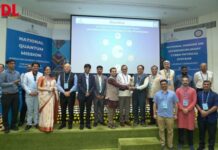
A Portable Digital Assistant or PDA is a small, hand-held device equipped with computer capabilities that nowadays often includes wireless network connectivity, a mobile phone, a camera and a variety of add-on hardware and software extensions. For Attewell (2005), as the number of devices available globally increases, this technology will become “digital life” for many individuals. This tool potentially creates a spectrum of educational opportunities and a new type of student-technology partnership in learning. Equipped with multimedia capabilities this technology permits for delivery of all kinds of digital material such as video, audio, graphic and integrated multimedia presentation
 Appropriately designed educational digital material church as learning objects could be effectively delivered to students via this technology any time and anywhere. Learning objects for educational applications via PDA technology must be designed around key benefits of this technology for learning as well as around its limitations.
Appropriately designed educational digital material church as learning objects could be effectively delivered to students via this technology any time and anywhere. Learning objects for educational applications via PDA technology must be designed around key benefits of this technology for learning as well as around its limitations.
Key benefits of this technology are portability and being able to act as personal companion to
individuals in variety of activities in productive ways. One of the key limitations of PDA is widely considered to be associated with small screen display area. The central focus of the study reported here is to gain understanding of important design consideration that will result in creation of better learning objects for educational applications via PDA technology.
The study of the effective design of Learning Objects for PDA delivery
The preliminary qualitative study reported in this paper was designed to explore the following questions: 1. What types of learning objects may be more effective for educational applications via PDA technology? 2. What may be a more effective context for their educational applications via PDA technology?
3. How can these types of learning objects be designed to manage the challenge of the small display area of PDA technology? There are two stages in this study. In the first stage, a number of educational professionals were interviewed. The condition for including an individual for an interview was that he or she be an experienced education professional who had previously used PDA technology for personal and educational uses. The interviews were facilitated by a PDA device and demonstrations of different types of learning objects (as classified above).
Various learning objects were shown and their educational possibilities for PDA delivery were discussed with the respondents. These learning objects were selected to also permit demonstration of various media (text, visuals, audio) and different kinds of interactions (buttons, hot-spots, sliders, text-entry boxes) in order to facilitate further discussion leading to an understanding of possibilities for dealing with the challenges of a small display area.
The design took into consideration the possibilities for dealing with the challenges of small screen as identified from the initial stage of the study through involvement with ten educational professionals experienced with educational use of PDA technology. Students’ experiences of using these learning objects are currently explored through experiments in one primary and one secondary school classroom.
The study insights
Data from the initial stage of the study suggests that the respondents in general understood that effective learning objects for delivery via PDA technology should be designed in a way that supports student-centered learning activities, such as problem solving (e.g. troubleshooting, strategic performance, case analysis, design or dilemma – for more detailed classification of problem types).
In particular, two types of learning objects from the classification appear to be favoured for delivery via PDA technology based on the perspectives of the respondents: an information object and a conceptual model. As the study continued to involve students and their teachers in the classroom, a conceptual model appeared favoured. In this paper, some discussion about this particular type of learning object is provided.
All the respondents suggested that the small display area is a critical limitation of this type of technology, a significant factor that affects the effectiveness of presentations of learning objects, and a factor that might negatively impact general acceptance of this type of technology in education communities. One idea to deal with the limitations of screen size was to provide a facility for students to zoom in on certain areas of the learningobject, while simultaneously having access to a thumbnail view of the entire learning object.
Another idea that surfaced in the study was the use of a “moveable” pop-up area that houses navigation elements or information. The movable screen elements could be designed in a way to be semi-transparent to allow partial visibility of the remaining screen behind them. One more idea that emerged was a novel way to utilise a pointing device (that is, a stylus pen). The conceptual model as type of learning objects is discussed here which seems as the most appropriate educational applications via PDA.
Conceptual models A conceptual model is a type of a learning object that represents one or more related concepts or ideas, usually in an interactive and visual way. It might be appropriate to think of conceptual models as representations of cognitive resources existing in the mind of subject matter experts, as useful conceptual knowledge that aids decision-making, disciplinary problem-solving and as key concepts from a discipline representing knowledge as sociohistorical heritage.
Previous research with visual educational material introduced a conceptual model (see Mayer, 1989. Mayer suggests that these improve the ability of learners to transfer their learning to solve new problems, because learners have constructed useful mind models that they are able to mentally manipulate when needed technology-based representations, Mayer (2003) suggests that multiple representations facilitate learning because different modalities are encoded and organised in different mind models which, when mentally connected, lead to deeper understanding. Now we have powerful technology-based tools that enable us to add critical dimensions to the design of conceptual models – interactivity and modalities.
For Fraser (1999), these capabilities of contemporary technology provide unique opportunity for communication of concepts to learners through representational pedagogical models. Fraser writes that “in the past, we relied on words, diagrams, equations, and gesticulations to build those models piece by piece in the minds of the students… we now have a new tool – not one that replaces the older ones, but one that greatly extends them: interactive computer visualisation.” Models were also discussed by Gibbons (n.d.). Gibbon suggests that all instruction should be based around three types of models representing instructional content: (a) models of environment; (b) models of natural or manufactured systems; and (c) models of human performance. However, these models appear to be representations of reality and expert performance, rather than models of conceptual knowledge. Interactivity and modalities allow the creation of conceptual models that potentially represent conceptual knowledge and ideas (not a simulation or emonstration of a performance).
An example of a conceptual model, “Exploring Pulleys System”, is presented here. This learning object is an interactive and visual representation of a concept of mechanical transfer of power through pulleys system. It allows students to manipulate a number of parameters and observe impact of the configuration on the pulleys system. In order for full educational potential of this learning object to be realised, a teacher needs to create a task within which students will be engaged in inquiry and exploration of underlining relationships embedded the learning object. Uncovering these relationship should lead to deeper understanding of the key concept represented by the learning object.
This deep understanding in the longer run might be supported by perceptual impressions and individuals cognitive ability to recreate interaction in the mind through imagination. However, fundamental in this context of effective utility of a learning object in learning is a task for student that is developed by a teacher. PDA technology allows conceptual models to be available to students in a variety of educational situations, any time and anywhere. An unexplored idea guiding my thinking at this stage is that these conceptual models might ct as mediating tools and external supplements to deficiencies in students’ knowledge within a context of intellectual activities which are at the higher level of complexity than their current level of development.
Through provision of external conceptual models, student problemsolving performance might be brought to a higher level. Portable Digital Assistant technology potentially creates a spectrum of educational opportunities and new types of student-technology partnerships in learning. The concept of the learning object opens the opportunity for novel ways of packaging educationally useful materials for delivery using a variety of technologies. Although the learning object is defined in a variety of ways that are often contradictory, the study respondents favour conceptual models as the most suitable type for PDA delivery.
The key limitation of PDA technology for the delivery of learning objects is the challenge of the small display area. The only way of dealing with this limitation is to re-invent some strategies for more effective design of learning objects and for novel ways of interaction with screen display elements of this technology.
























